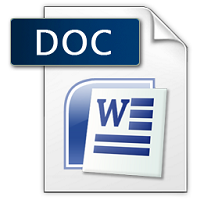₹198.00
Scroll down for Match your questions with Sample
Note- Students need to make Changes before uploading for Avoid similarity issue in turnitin.
Another Option
UNIQUE ASSIGNMENT
0-30% Similarity in turnitin
Price is 700 per assignment
Unique assignment buy via WhatsApp 8755555879
Description
| SESSION | NOV-DEC2023 |
| PROGRAM | BACHELOR OF COMPUTER APPLICATIONS (BCA) |
| SEMESTER | II |
| COURSE CODE & NAME | DCA1204 – COMMUNICATION SKILLS AND PERSONALITY DEVELOPMENT |
Assignment Set – 1
- Define Communication barrier. Mention any four barriers to communication and substantiate your answer with one example for each.
Ans 1.
Communication barriers are obstacles that prevent effective exchange of ideas or information between individuals or groups. They can arise from a variety of sources, often making communication less efficient and more challenging. Here are four common barriers to communication, each illustrated with an example:
- Language Barrier
Language barriers occur when people do not
Its Half solved only
Buy Complete from our online store
https://smuassignment.in/online-store/
MUJ Fully solved assignment available for session SEPT 2023.
Lowest price guarantee with quality.
Charges INR 198 only per assignment. For more information you can get via mail or Whats app also
Mail id is aapkieducation@gmail.com
Our website www.smuassignment.in
After mail, we will reply you instant or maximum
1 hour.
Otherwise you can also contact on our
whatsapp no 8791490301
- Differentiate between listening and hearing. List the different types of listening.
Ans 2.
Listening and hearing are two fundamental aspects of how we interpret sounds and communicate with others. Despite being related, they are distinct processes with different characteristics and implications.
Hearing: The Physical Process
Hearing is primarily a physiological process. It is the act of perceiving sound by the ear. If you’re not hearing-impaired,
- Define paragraph? Discuss the steps one should follow while writing a paragraph.
Ans 3.
Paragraph
A paragraph is a distinct section of a piece of writing, usually dealing with a single theme and indicated by a new line, indentation, or numbering. It’s a fundamental unit of composition, typically consisting of multiple sentences that collectively express a complete idea. The structure of a paragraph enables writers to organize their thoughts clearly and readers to understand the text’s flow
Top of Form
Assignment Set – 2
- Illustrate the various types of personalities.
Ans 4.
Personality types are fascinating and complex. The concept of personality types is rooted in the psychological theory that suggests individuals exhibit distinct characteristics consistently throughout their lives. These types can be classified in various ways, from the popular Myers-Briggs Type Indicator (MBTI) to the Big Five personality traits. Each classification system offers a unique perspective on human
- Define leadership. Explain the challenges faced by a leader.
Ans 5.
Leadership is a multifaceted concept that encompasses the ability to guide, influence, and inspire individuals or groups towards achieving a common goal. It’s an amalgamation of various skills, behaviors, and attitudes that enable an individual to effectively direct and motivate others. Leadership is not limited to a specific context; it can be observed in various spheres, including business, politics, education, and social
- Explain the importance of time management. Mention some ways that one can apply to manage time.
Ans 6.
Time management is a critical skill in today’s fast-paced world. It involves the ability to use one’s time effectively or productively, especially at work. Time management is important for various reasons, and there are several methods to improve it.
The Importance of Time Management


